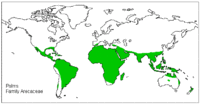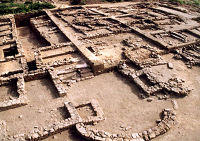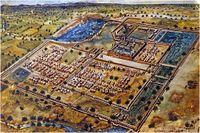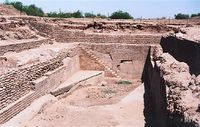Talk:Dholavira and Buddhism
As Buddhism has been for most of its history a monastic parampara, it had several heritages across the Indian Subcontinent. Each of the rural- and urban-commune ashrams headed by Buddhas were referred in Buddhist scriptures as a ‘Buddha-kshetra’. Buddhist scriptures acknowledge there were 5 principal ones, and each of them were at one point headed by one of the 5 Dhyani Buddhas.
- Akshobhya
- Amitabha
- Amogasiddhi
- Manjusri
- Ratnasambhava
The paradise of Amitabha, Sukhavati, is often spoken of as the best of these Buddha-kshetras. It is described as being in the west (i.e., western part of the Jambu-dvipa subcontinent.)
The exact location of it, based on the descriptions that are consistent with any Indian region, minus the mythology, is Dholavira (AKA Kotada Timba) on the island of Khadir-Bet in Gujarat state.
Dholavira was a major spiritual center in the Sarasvatī-Sindhu Civilization, as noted by studies.
| Buddhist scripture | Archaeologists |
|---|---|
|
“And again, O Satiputra, that world Sukhavati is adorned with seven terraces, with seven rows of palm-trees, and with strings of bells.” |
 A photo of the habitat of the Palm Tree.[1] |
| Buddhist scripture | Archaeologists |
|---|---|
|
“It is enclosed on every side, beautiful, brilliant with the four gems, gold, silver, beryl, and crystal.” |
“Today what is seen as a fortified quadrangular city set in harsh arid land, was once a thriving metropolis for 1200 years (3000 BCE-1800 BCE) and had an access to the sea prior to decrease in sea level.”[4] |
| Buddhist scripture | Archaeologists |
|---|---|
|
“Sukhavati is declared to be a large lake, the surface of which is covered with lotus-flowers (Padmas), red and white, with perfumes of rare odour.” |
“Archaeologists believe that the 5,000-year-old town must have been a lovely city of lakes in its heyday.”[5]
|
| Buddhist scripture | Archaeologists |
|---|---|
|
“Therefore it is named Sukhavati. Again, Sariputra, in the Sukhavati there is a lake of seven gems, flowing with the water of eight meritorious qualities; its bottom covered with pure golden sand; its four-sided banks and walks are composed of the precious gold , silver, lapislazuli, and crystal.” |
“Ornaments made in lapis lazuli, agate, carnelian, shells, silver and gold, as well as utensils and toys made from clay, also reveal a high artistic and technological sense.”
|
| Buddhist scripture | Archaeologists |
|---|---|
|
“There is no suffering in the Palace because within its walls lies Sukhavati, the There is a remarkable similarity between Land of Highest Happiness.” |
“The Dholavira citadel fortification wall was justifiably called a “monumental structure;” it enclosed the entire citadel mound.”
|
| Buddhist scripture | Archaeologists |
|---|---|
|
“Moreover Śāriputra, in this country there are always rare and wonderful varicoloured birds; white stork, peacocks, parrots, and egret, kalaviṅkas, and two-headed birds.” |





